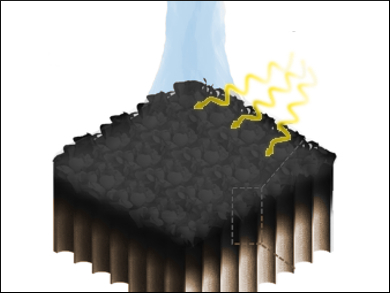Generating steam with heat created by solar rays is a sustainable approach to seawater desalination and purification. The steam is created from seawater and is then recondensed into drinking water. To be efficient, the process needs materials that can absorb sunlight and turn it into thermal energy. The materials should also be able to transport and evaporate the water as efficiently as possible.
Jia Xie, Huazhong University of Science and Technology, Wuhan, China, Liangbing Hu, University of Maryland, College Park, USA, and colleagues have developed a solar steam generation device based on carbon nanotube-modified flexible wood membrane (F-Wood/CNTs). The team used Balsa wood, which has a nanochannel structure that can transport water, as a starting material and treated it with a NaOH/Na2SO3 solution to soften it and make it flexible. The resulting flexible wood membrane (F-Wood) was coated with 0.3–0.5 wt% of carbon nanotubes to improve the light absorbability (hybrid product pictured).
The resulting steam generation device shows a high solar thermal efficiency of 81 % with an evaporation rate of 11.22 kg m−2 h−1 at 10 kW m−2. The device is cost-effective and sustainable, and the production process can be scaled up. Repeated bending does not damage the flexible structure. According to the researchers, these properties make the hybrid material promising for both large-scale and portable solar steam generation applications
- Highly Flexible and Efficient Solar Steam Generation Device,
Chaoji Chen, Yiju Li, Jianwei Song, Zhi Yang, Yudi Kuang, Emily Hitz, Chao Jia, Amy Gong, Feng Jiang, J. Y. Zhu, Bao Yang, Jia Xie, Liangbing Hu,
Adv. Mater. 2017.
DOI: 10.1002/adma.201701756




